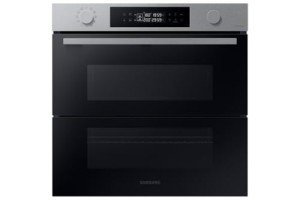The Comprehensive Guide to Built-In Ovens: Features, Benefits, and FAQs
Built-in ovens are a popular option for modern kitchens, providing adaptability, efficiency, and a sleek design that integrates perfectly into cabinets. This short article will explore the different aspects of built-in ovens, including their functions, benefits, setup options, maintenance tips, and responses to frequently asked questions.
What is a Built-In Oven?
A built-in oven is created to be set up within kitchen cabinetry and is readily available in various setups, such as single or double ovens. Unlike freestanding ovens, built-in models provide a streamlined look and provide more versatility in kitchen design. They can be found in electric, gas, and steam alternatives, dealing with a series of cooking choices.
Features of Built-In Ovens
Built-in ovens are packed with functions that boost cooking experiences. Here are some of the most common functions to consider:
| Feature | Description |
|---|---|
| Self-Cleaning | Many models include a self-cleaning function that burns residue at heats, streamlining upkeep. |
| Convection Cooking | This function uses a fan to flow hot air, cooking food more equally and quickly. |
| Smart Technology | Some ovens come geared up with Wi-Fi connection, allowing users to control the oven remotely via mobile phone. |
| Numerous Cooking Modes | Include alternatives such as baking, broiling, roasting, and air frying, providing adaptability for different meals. |
| Temperature level Probe | Keeps an eye on the internal temperature level of food, guaranteeing perfectly prepared meals whenever. |
| Streamlined Design Options | Offered in various finishes (stainless-steel, black, white) to match kitchen design. |
Advantages of Built-In Ovens
The installation of a built-in oven brings various advantages to any kitchen:
- Space Efficiency: Built-in ovens take full advantage of kitchen space, offering a clean and organized look without sacrificing functionality.
- Improved Cooking Performance: With sophisticated features like convection cooking and accurate temperature controls, built-in ovens frequently exceed conventional designs.
- Design Flexibility: These ovens can be installed at eye level, enabling simple gain access to without bending down, which can be specifically advantageous for individuals with physical limitations.
- Improved Resale Value: A properly designed kitchen with high-quality built-in appliances might attract prospective buyers, boosting general property worth.
- Personalization Options: Many brands provide customizable designs that fit the particular measurements and visual of private kitchens.
Setup Options
When picking a built-in oven, understanding the setup alternatives is important. Here are the most typical setups:
- Single Built-In Oven: Ideal for smaller kitchen areas, these systems offer adequate space to prepare a range of dishes at the same time, best for daily cooking.
- Double Built-In Oven: Best matched for passionate cooks and large households, double ovens permit synchronised cooking at 2 different temperatures, suitable for meals that need different cooking approaches.
- Combination Steam and Oven: A hybrid service that integrates the advantages of traditional baking with steam cooking. This alternative is exceptional for retaining moisture in foods, making it best for baking bread or roasting meats.
Upkeep Tips for Built-In Ovens
Maintaining a built-in oven is necessary for its longevity and ideal efficiency. Here are some practical maintenance ideas:
- Regular Cleaning: Use the self-cleaning feature when necessary, and wipe down the outside and interior surface areas routinely to avoid grease accumulation.
- Check the Seals: Inspect the oven door seals for any wear or damage to make sure appropriate insulation and cooking performance.
- Temperature Calibration: Occasionally test the temperature precision utilizing an oven thermometer, especially if cooking times appear longer than usual.
- Ventilation: Ensure adequate ventilation around the oven to avoid getting too hot, especially for built-in designs that may be surrounded by cabinetry.
Frequently Asked Questions About Built-In Ovens
1. Are built-in ovens more costly than freestanding models?Yes, built-in ovens tend to be more pricey due to their design, setup requirements, and extra features. However, their advantages can justify the cost in the long run.
2. Can you set up a built-in oven yourself?While some convenient individuals may try to install a built-in oven, it is advised to employ a professional to make sure correct setup, ventilation, and security requirements.
3. What is the typical life-span of a built-in oven?The normal lifespan of a built-in oven is around 10 to 15 years, depending on use and upkeep. Routine care can help extend its longevity.
4. Are built-in ovens energy efficient?Numerous contemporary built-in ovens are developed with energy performance in mind, incorporating features like insulation and precise temperature controls that might decrease energy usage compared to older designs.
5. Can a built-in oven be repaired if it breaks?Yes, built-in ovens can frequently be repaired. It is advisable to contact a licensed technician for medical diagnoses and repair work to guarantee security and compliance with guarantee agreements.
Built-in ovens are an excellent addition to any contemporary kitchen, offering a mix of style, performance, and advanced cooking features. With the best knowledge about their functions, benefits, and upkeep, house owners can make informed choices to boost their cooking experiences. As hob and built in oven package continue to evolve, the built-in oven stays a staple for those seeking to blend looks with effectiveness in their cooking spaces.

